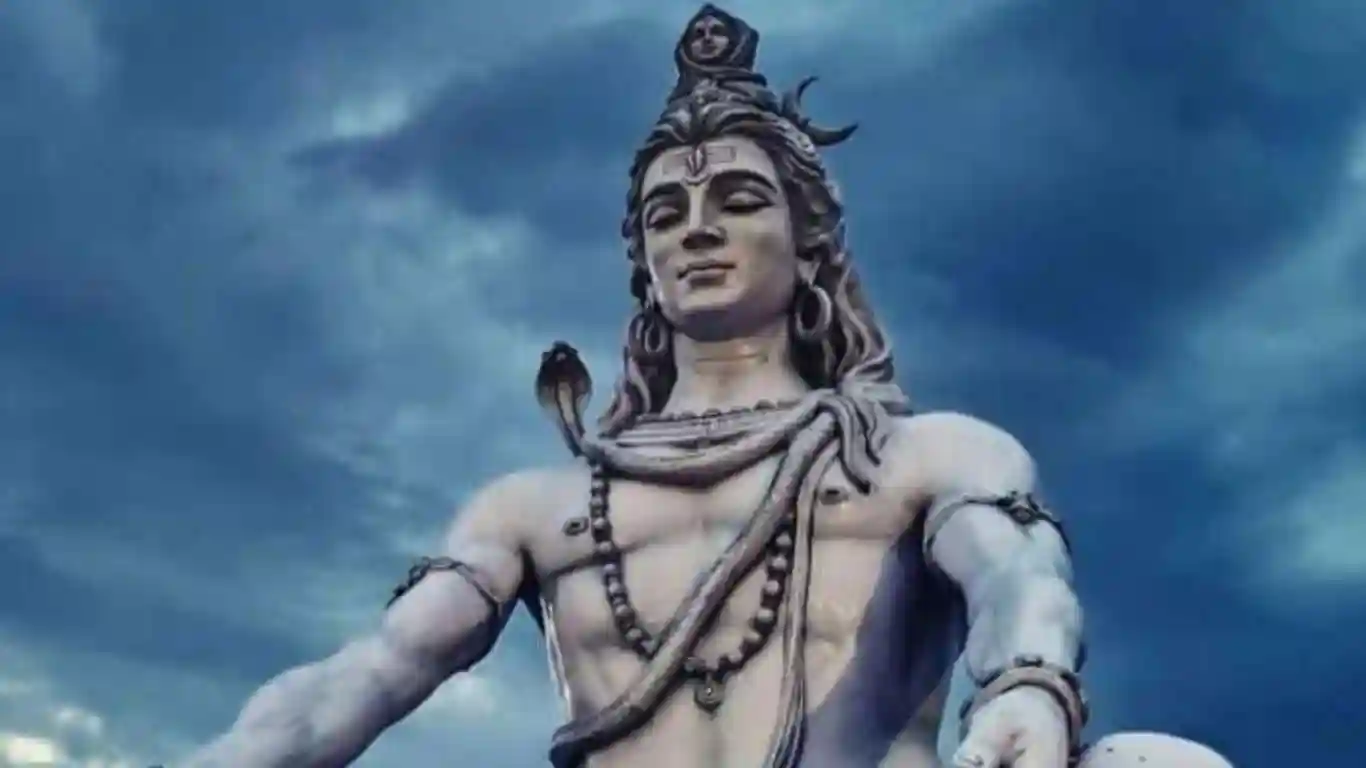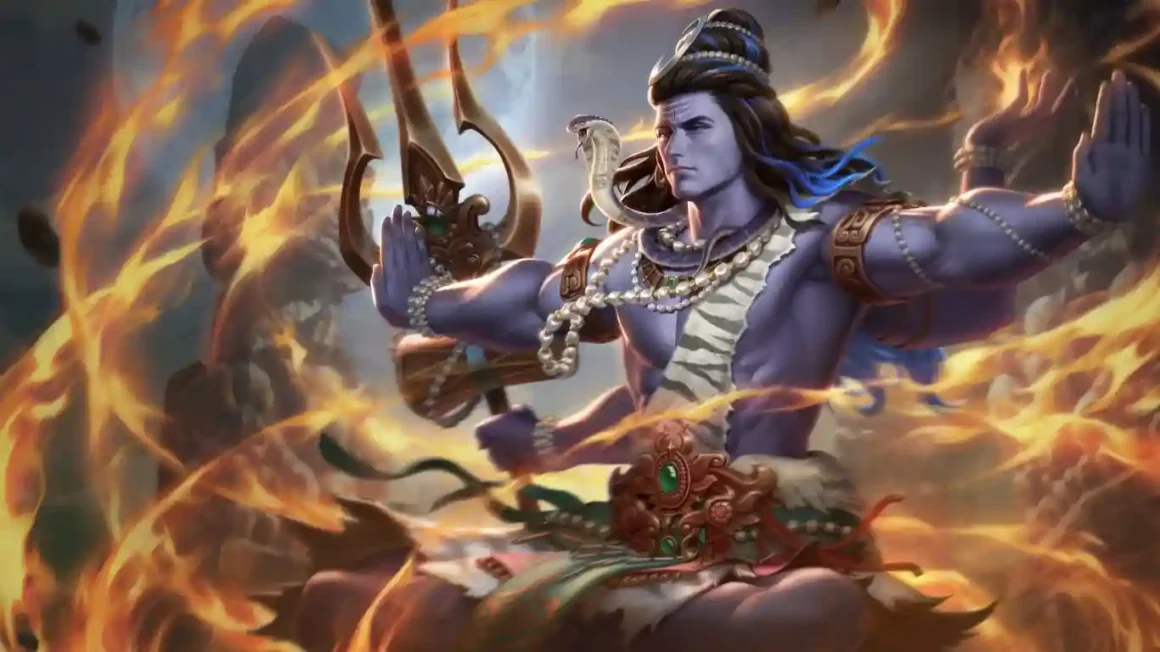Lord Shiva is one of the most important deities in Hindu Mythology. As a part of the ‘Trimurti’, Shiva, along with Brahma (The Creator) and Vishnu (The Preserver or Protector) has much significance. In the ‘Trimurti’, he takes on the role of ‘The Destroyer’. Lord Shiva is also known as the Mahadeva, which literally translates to ‘The Great God’ and is the highest being in the philosophy of Shaivism within the larger Hindu teaching.
As his title in the Trimurti, The Destroyer suggests, he has an intense and brutal personality at times. However, this does not mean that the God is incapable of being benign. Lord Shiva resides in a secluded region among the hills on Mount Kailash, along with his wife, Devi Parvati and two children, Ganesha and Kartikeya. The legends surrounding Lord Shiva are many and show a different side of the god each time.
Something that sets him apart from the rest of the Trimurti (Vishnu and Brahma) is his origin. While both Vishnu and Brahma’s first mentions can be found in the Vedic literature, Shiva predates the Vedas and finds his origin in the tribes. Lord Shiva, in reality, is not a single deity, hence the origins are trickier to trace. In fact, an amalgamation of the legends of the tribes and some mentions in the Vedas is what forms him as an entity.

Some prehistoric paintings have been interpreted by scholars studying in this field as depictions of Lord Shiva, his trident and his sacred mount known as Nandi. Even during the Indus Valley Civilizations, a certain seal depicting a human-like figure engaging in a yoga posture has been a cause for speculation for scholars. Though these are simply speculations, there does seem to be, at least, some evidence that points towards Shiva being an existent figure before the Vedas were written.
As far as Vedic Literature is concerned, Lord Shiva shares an uncanny resemblance with another god by the name of Rudra. In the scriptures, therefore, they are considered interchangeable and are often referred to as either Shiva or Rudra. Rudra is a deity originating from the Rigveda, he is an intimidating god of the storms.
Three of the hymns from the Rigveda are entirely dedicated to this entity of Rudra, though there are also multiple other references to him in other works. One hymn, in particular, seems to suggest that Rudra and Lord Shiva illustrate the two vividly different natures of a singular entity. He depicts a more kind, calm and benevolent vision whereas Rudra is the cruel, fearsome vision of the god. The sacred texts that will follow the Vedas will reinforce the idea that Shiva and Rudra are, in fact, the same deity.
In the Shvetashvatara Upanishad, the deity of Shiva evolved into the existence of the Supreme Being from whom everything and everyone begins and it is the highest goal one can reach. Lord Shiva has been found to be mentioned in the Mahabharata – the epic cataloguing the journey of the Pandavas – as well.

Under the vast range of Upanishads, which are religious scripture, there is a group of a total of fourteen scriptures, known as the Shaiva Upanishads, which focus solely on Lord Shiva. To the extent of these Upanishads, at least, he becomes the metaphysical reality of the Brahman, where the Self exists. The Upanishads also detail rituals and rite practices to appease Shiva.
Moving on to another scripture, the Puranas also features certain sub-Puranas focusing on Lord Shiva. Namely, the Shiva Purana and the Linga Purana hold much importance. The Puranas have chapters encompassing the subject matter of cosmology, various gods and goddesses and their relationships, yoga and tirtha.
Hinduism consists of certain sects, Vaishnavism, focusing on Lord Vishnu, is one such sect. It only stands to reason, that he, also a major god and part of the Trimurti would have a sect of his own. The sect that focuses on Lord Shiva is known as Shaivism. To the devotees of Shaivism, Lord Shiva is the one who is the Supreme Being, the one who created everything. But also the one who preserves and could destroy everything. This philosophy of Shaivism was divided into two separate texts and ideologies, one followed the Vedas and the Puranas, while the other looked to the Tantra texts for its ideals. Even in Vaishnavism, which is a text largely focusing on the Lord Vishnu, mentions of Lord Shiva can also be found and vice versa.
Another fascinating piece of information about Lord Shiva is that he was a Great Yogi and was a diligent practicer of the art of Yoga. In fact, he has actually been considered the patron deity of Yoga.
There are certain attributes that are unique to Lord Shiva which one should discuss when talking about him. Certain legends and religious sources report the presence of a ‘third eye’ that Lord Shiva possessed. This third eye often stands as a symbol for achieving enlightenment through knowledge. Speaking of symbols, the visual of the crescent moon is heavily associated with Lord Shiva. The association is so strong that Shiva is at times referred to as the Chandrashekhar which literally translates into having the moon on your crown. This specific symbol holds significance to the Rudra-Shiva identity.

Shiva is also famously known as the Neelkantha meaning the one with a blue throat. The reason behind this naming comes from the story where Shiva drank the poison which emerged from the Samudra Manthan to render its destructive capabilities useless. This poison, however, was extremely strong and spread quickly. Goddess Parvati, using her quick thinking squeezed Shiva’s neck to stop the spread of the poison to the rest of Shiva’s body, particularly his stomach, which is where the universe exists. As the poison remained in his throat, it turned his throat blue, thus gaining him the name Neelkantha.
Shiva is often depicted as the God of Dance, Natraj, as there is a strong association between him and dance. A specific dance form, which is said to be one that was practised by Shiva himself is the Tandav. Shiva is also depicted as the Linga statue in temples, where a rounded cylindrical shape over a flat circular disk is meant to be a depiction of the god.
Lord Shiva is a widely worshipped deity, hence temples dedicated to him are many and widespread. The Jyotirlingas spread all over the Indian subcontinent are of certain import. Somnath Temple in Gujarat, Kedarnath Temple in Uttarakhand, and Trimbakeshwar in Maharashtra are some of the most famous Shiva temples in India. Festivals like Mahashivratri and pilgrimages to the Jyotirlinga shrines are followed by many devotees.
However, devotion to Lord Shiva is not limited to the country of India or even Hinduism, alone. For instance, in Indonesia, Shiva is more widely known as Batara Guru. In the faith of Sikhism, Shiva is mentioned in the sacred texts. In countries like China and Taiwan, Lord Shiva is known by the name of Maheshwara.
Also Read: 3 Hindu gods also known as Trimurti | Brahma (creator) | Vishnu (preserver) | Mahesh (destroyer) | Explained



